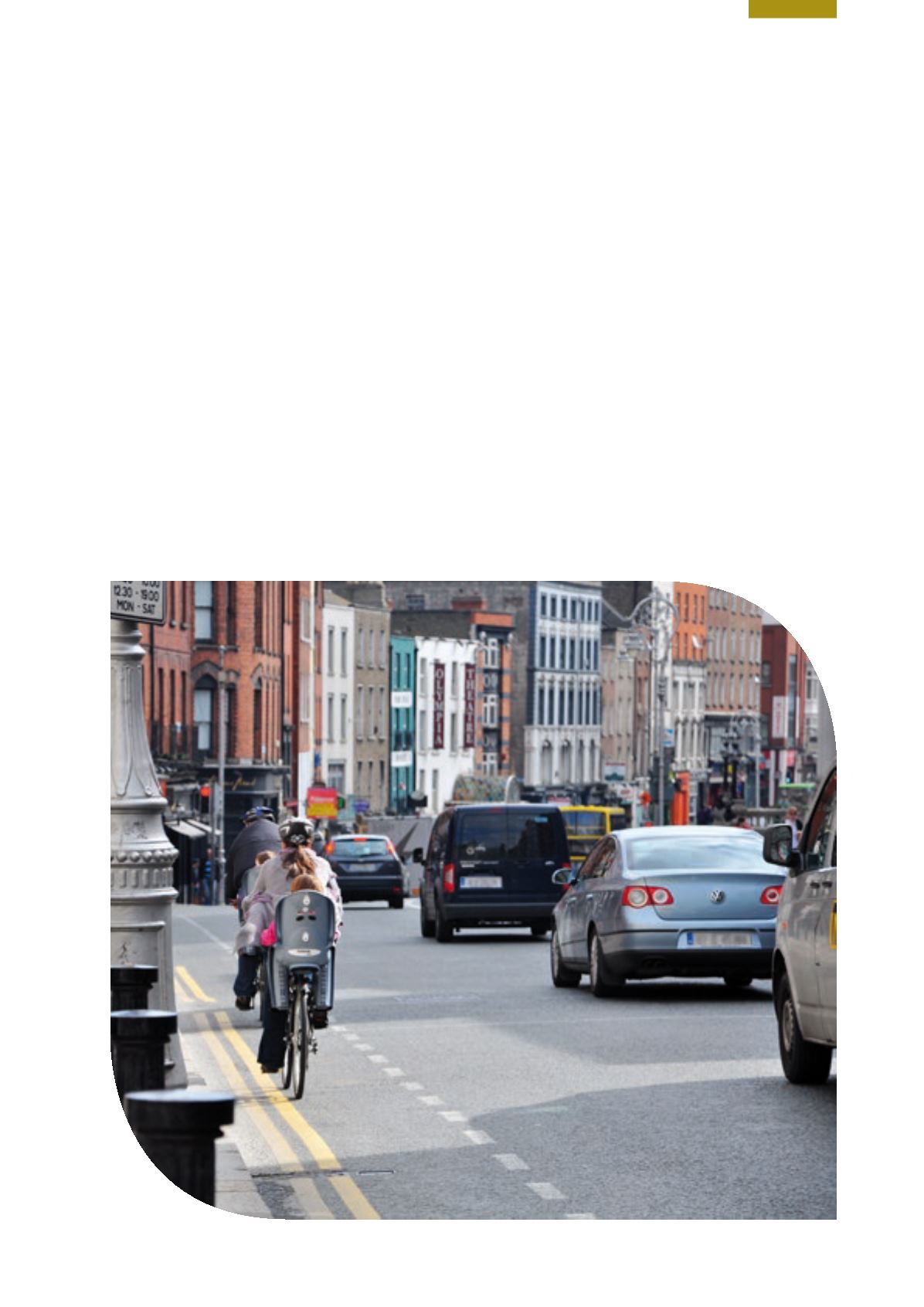

163
Chapter 10: Environment and Transport
Environment and Transport
Introduction
Our transport system is highly fossil fuel dependent,
which results in significant emissions of greenhouse gases
(GHGs) and air pollutants that are contained in exhaust
fumes. Overall, 19.5% (11.3 Mt CO
2
eq) of Ireland’s
GHG emissions are from the transport sector, and this
proportion is expected to increase substantially by 2020.
The national climate policy goal (DECLG, 2014) is to
reduce overall emissions of carbon dioxide (CO
2
) by at
least 80% of 1990 levels by 2050. Ireland also has various
targets in the transport sector that it has to achieve,
including an obligation to deliver 10% of transport energy
from renewable sources by 2020. These stringent goals
will require a major transformation in how our transport
network is operated and managed.
A recent report by the European Environment Agency
(EEA, 2015) has highlighted that a modal shift away from
road transport and a switch to alternative fuels are among
the key future challenges to be overcome if Europe is to
achieve its decarbonisation targets. In Ireland, there is an
urgent need for better urban and spatial planning, as well
as a major investment programme to encourage much
more fuel-efficient transport, a switch to cleaner and
alternative fuels, a rapid increase in the electrification of
our car stock and a very significant shift from private car to
public transport. Without these measures, Ireland will fall
well short of meeting its various targets in the transport
sector, and of ultimately reducing its emissions of CO
2
by
at least 80% by 2050.


















